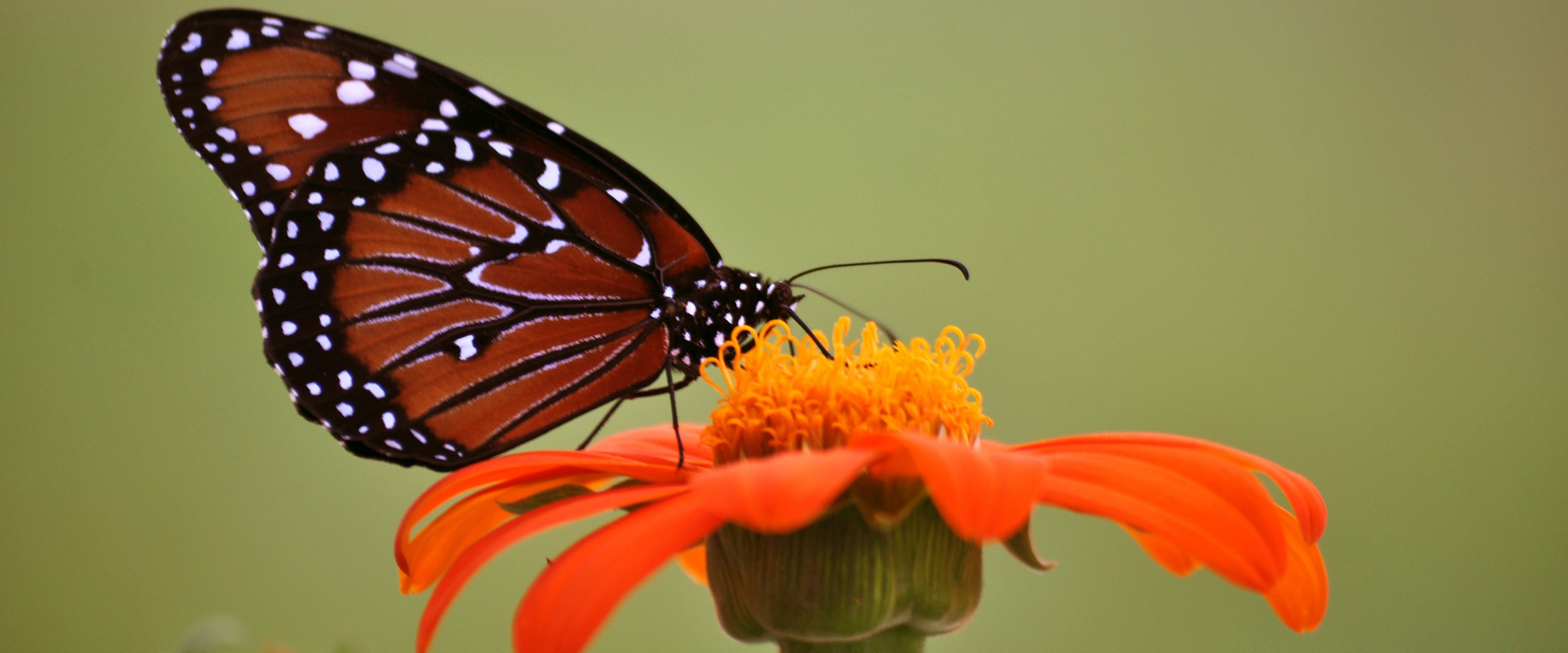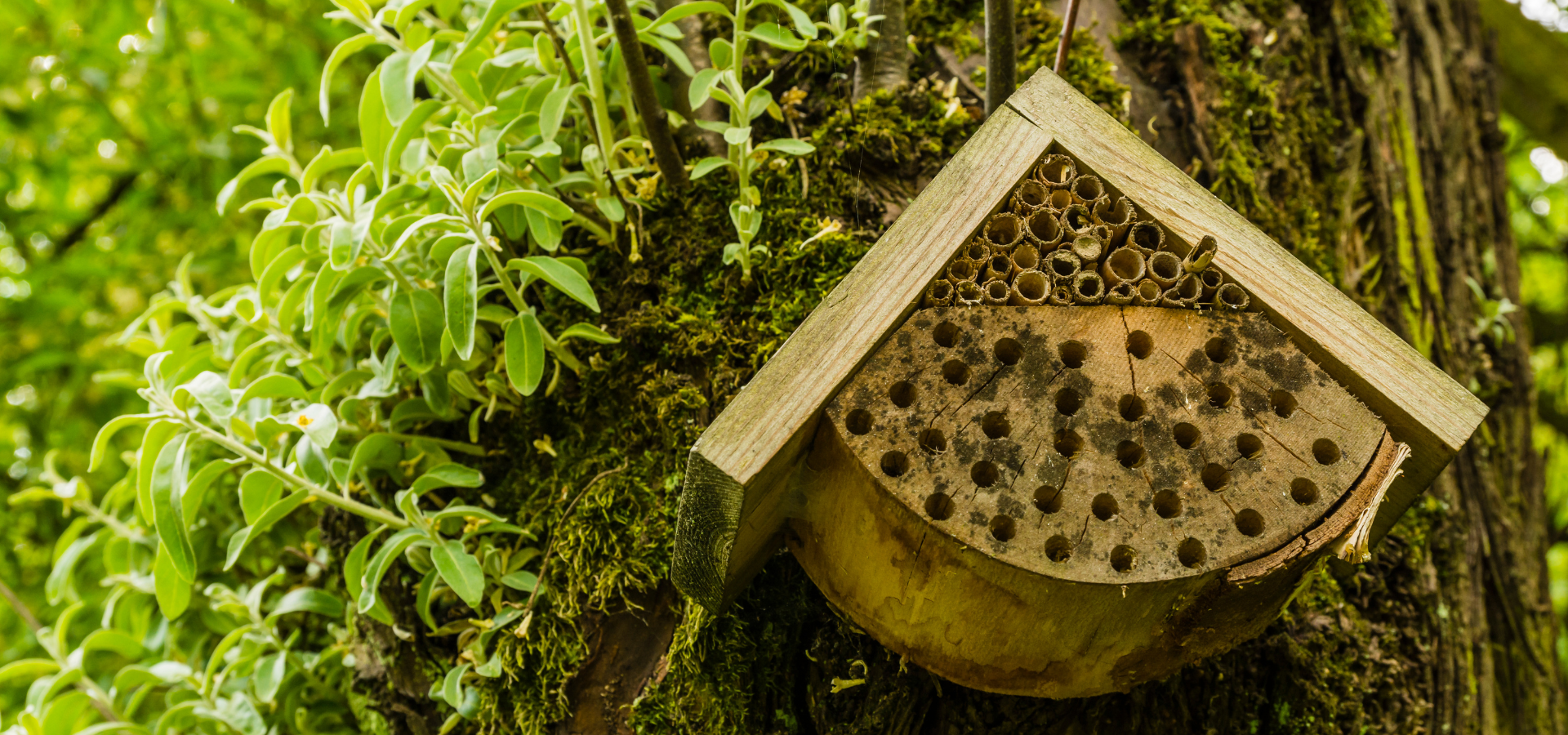
The beginner's guide to bug hotels and insect houses
Bugs – or insects, to use the scientific term – are amazing creatures vital to our gardens.
They’re integral to the pollination process, they get rid of pests, and they're a source of food for other creatures on the food chain. Although, don’t tell them about the last bit!
If you want to attract more beneficial insects to your garden, a bug hotel is what you need.
In this guide, we’re going to tell you all about bug hotels, including those designed for specific insects: ladybird houses, butterfly houses, and bee houses.
We’ve written this piece to be read from start to finish by someone completely new to bugs. If you're already familiar with our creepy crawly friends and want to skip to a particular topic, click on the relevant topic below in the contents.
We hope that you find our guide useful and your garden is visited by loads of beneficial insect guests!
Contents
- What a bug hotel is
- Beneficial insects in more depth
- What to look for in a bug hotel
- General pointers to attract bug hotel guests
- How to attract ladybirds specifically
- How to attract butterflies specifically
- How to attract solitary bees specifically
- How long until bugs start using your hotel
- How to clean and maintain your bug hotel
- Conclusion
What a bug hotel is
A bug hotel – otherwise known as an insect hotel, bug house, or insect house – is an artificial nesting structure for insects.
Specifically, they’re designed to attract beneficial insects: those that prey on pests, help in the pollination process, and, to put it callously, improve the habitat’s food chain.
Bug hotels are usually made from wood, although they can also feature brick and, less commonly, plastic and metal.
Depending on the type of insect they’re intended for, bug hotels can come in a range of sizes and shapes. Most have multiple sections that offer places for insects to nest, especially during the winter.
Such structures are suitable for gardens of any size. Indeed, for those with smaller gardens or even just balcony spaces, they can be a great addition to bring life to the space.
If you’re particularly handy, you can build your own insect house. However, there are many options available to buy that are expertly designed to attract and house specific insects.

Beneficial insects in more depth
Whether you call them beneficial bugs or beneficial insects, the most important thing is that they’re of great benefit to your garden.
Case in point, did you know that 80% of all plants – including ornamental plants, food crops, fruit trees, and wild plants – rely on insects to produce fruit and seeds?
In short, beneficial insects are those that help pollinate, reduce pests, and increase biodiversity.
Although we’ll give great general insect advice in this guide, the three we’re going to focus on are ladybirds, butterflies, and solitary bees.
Ladybirds: Pest controlEveryone loves a ladybird – aside from the pests they eat!
These well-known beetles belong to the Coccinellidae family and consist of more than 40 different species.
Not just a pretty face (or more accurately red shell with spots), ladybirds are carnivores who eat pests such as spider mites and aphids. This makes them brilliant garden – and bug hotel – guests.

In addition to being beautiful and helping in the pollination process, butterflies play an important role in the food chain as prey for birds, bats, and other insectivorous animals.
There are approximately 2,500 species of Lepidoptera (the fancy name for butterflies and moths – they’re pretty similar) in Britain.
Butterflies that hibernate prefer sheltered places such as crevices in houses and sheds. However, they can also be enticed into a butterfly house.

To begin with, although they often look similar, honey bees and bumble bees are not the same solitary bees.
Solitary bees are, unsurprisingly, a type of bee that lives on their own instead of within a hive.
The majority of these bees will start looking for cover at the start of autumn in order to survive the winter – and there are over 200 species of solitary bee in Britain. This is where your fancy new bee house will come in handy!

What to look for in a bug hotel
When you’re picking out your bug hotel, make sure:
- The roof is solid and sturdy; otherwise, it might get wet and start to grow mould.
- It has a closed-off back so that the bugs inside have more protection.
- It is constructed mostly from wood – although stone and brick elements are also fine.
- It is not made from impermeable materials such as glass or plastic.
- Any holes and openings should be smooth without any splinters.
Although there are features suited for all types of bug hotels, ones designed for specific insects have particular features.
Ladybird houses
Ladybirds hibernate over the winter.
They look for sheltered cracks and crevices in which to do this – so make sure your ladybird house’s opening mirror this with horizontal slits.

Pictured above is our ready-made Ladybird House.
Butterfly houses
Butterflies also hibernate over winter.
In contrast to the horizontal slits found on ladybird houses, butterfly houses have vertical slits that emulate cracks found in a tree’s bark.

Pictured above is our ready-made Butterfly House.
Solitary bee houses
Solitary bees require tunnels and tubes within which to nest.
They won’t use those that are open at both ends, so make sure that those featured in your bee house are closed off at the back.
Also, would you like to make your home in a spikey place? No! Make sure that the interiors of the tubes and tunnels are smooth and don’t have any splinters.

Pictured above is our ready-made Bee House.
General pointers to attract bug hotel guests
You’ll get different residents depending on where you place your hotel. Some bugs like cool, damp conditions and others, such as solitary bees, prefer the sun.
However, there are some general points to take into consideration.
If you have a particular bug you want to see in your garden, skip to the next few sections!
Fill chambers with goodies for creepy crawliesIf the chambers in your insect house are empty, you can add organic materials like pinecones, bark, straw, decomposing leaves, or twigs.
Avoid anything that may have undergone chemical treatment as this may deter insects from entering the home.
Avoid using pesticides around your bug hotelAvoid using pesticides around your hotel or in your garden at all to help draw visitors to your insect hotel.
In order to promote a natural balance of bacteria and insects, we advise using only organic fertilisers and absolutely no pesticides in your garden.
Protection from the rainA self-respecting insect won’t make a sodden and mouldy bug house their home.
To prevent mould, bug hotels should be placed so that they’re kept dry and protected.
Protection from the windChoose an area for your bug house that is protected from the wind. Windy areas aren't very conducive to thriving insect populations.
On top of potentially causing direct damage, the constant changes in temperature that come with wind won’t please your creepy crawly friends.
Protection from mischievous petsHang your bug hotel four to five feet high so that dogs and cats can’t knock it over… unless they try really hard!
Place near a water sourceYour bug house should be situated close to a water source as many insect species require water to survive.
Therefore, make sure there is always somewhere nearby for them to drink from if you want a variety of bugs to hang out with.
Place near foliagePlacing your insect hotel near an existing tree or bush will make it easy for insects to transfer safely over to your insect hotel.

How to attract ladybirds specifically
As previously mentioned, a main benefit of ladybirds is their pest control.
However, it’s a two-way street – they’ll only be around to eat aphids if there are aphids to eat!
So, although it can be tempting to freak out at the first sign of aphids and attempt to remove them, exercising some restraint will often result in a visit from hungry ladybirds.
You should also consider placing your ladybird house near plants that attract our red and spotty friends. Namely:
- Yarrow
- Carpet bugleweed (ajuga reptans)
- Alyssum
- Penstemon
- Fennel
- Cinquefoil
- Tansy
Finally, if you want a sure-fire way of getting ladybird guests in your hotel, consider purchasing frozen ladybird larvae. These can be placed within the insect house to give you a kickstart.

How to attract butterflies specifically
The first place to start with attracting butterflies is wood. To make your butterfly house more attractive to guests, consider furnishing the space. Start with twigs.
Also, butterflies prefer woodland to open space, so place your butterfly house in a wooded area of your garden.
Once the wood is sorted, consider placing plants butterflies love around the house, such as:
- Buddleia
- Marjoram
- Lavendar
- Perennial wallflower
To make your butterfly house particularly attractive, you can also whip up a sugar solution. Simply mix one part sugar with four parts water, then soak a sponge in the solution. Once the sponge is saturated, place it in the butterfly house. Check-in now and then to make sure it hasn’t gone mouldy and remove it after a week.

How to attract solitary bees specifically
As a rule of thumb, hang your bee house in a sunny, south-facing spot to encourage your favourite pollinators to settle.
Bees need an average temperature of at least 17°C. So, if the weather is too cold, place your bug house in a sun-filled greenhouse or conservatory.
If it's too hot outside, move it to a shady spot that's protected from direct sunlight; this will allow for better airflow and ventilation for coolant purposes.
Plants that are likely to attract solitary bees include:
- Lavender
- Fuschia
- Heather
- Viburnum
- Marjoram
- Cat mint
Also, before hanging the bee house, it is advisable to wipe the straws clean.

How long until bugs start using your hotel
This depends on the type of bug you're trying to attract, what your garden is like, where you live, what season it is, the weather, and the design of your hotel.
So, not too many factors.
However, if you’ve done everything right and have a bit of luck, bugs can start booking stays at your hotel within two weeks.
How to clean and maintain your bug hotel
There is no need to clean insect hotels. Instead, it is advised to completely replace the house after a few seasons of use as the materials deteriorate and become more prone to bacteria and illness.
However, if you find that your guests have vacated the premises and you want to spruce things up before new ones come along, you can still do a little spring cleaning. Clean your insect hotel by using an old dustpan and brush, removing any webs and dirt. Use gloves and take care that there isn’t anything still living in your insect hotel when you clean it.

Conclusion
We hope that you’ve found our guide useful. We wouldn’t want to confuse you or, heaven forbid, bug you out.
Terrible puns aside, bug hotels are a wonderful thing to have in your garden.
Here are the main points to take away from this guide:
- Bugs – as long as they’re of the beneficial variety – are great garden guests.
- Which type of bug hotel you choose, where you place it, and what you use to attract guests depends on which family of insects you want to see in your garden.
- Although you can make your own bug hotel, we’d recommend buying a pre-built one if you’re looking to attract a specific type of insect.
Have fun with your new creepy crawly friends!
